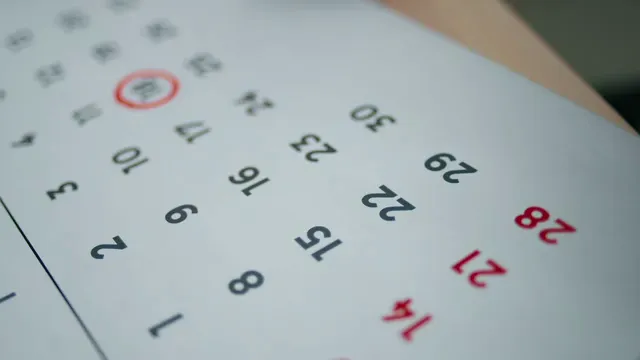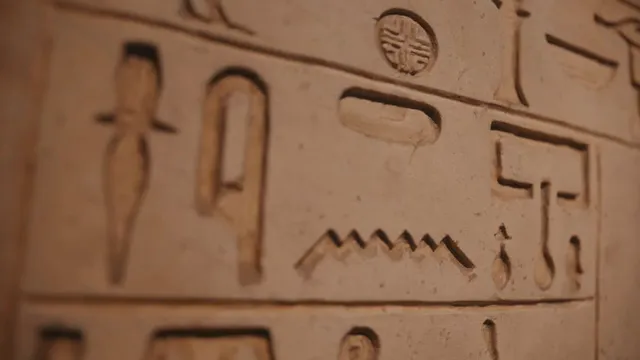
Why is There a Leap Year?
Introduction
Leap years are unique in the way they extend our calendar. Every four years, we add an extra day, February 29. This extra day is essential for keeping our calendars in sync with the Earth’s orbit around the Sun. Without leap years, our seasons would gradually drift over time, causing confusion in our calendar system.
If you’re eager to dive deeper into the fascinating world of calendars, check out The Calendar: A History of Our Days. This book will take you on a journey through time, exploring how our understanding of days has evolved!
Summary and Overview
Leap years exist to correct the discrepancy between the calendar year and the astronomical year. The Earth takes approximately 365.2425 days to complete one orbit around the Sun. To maintain this alignment, we add a leap day every four years.
Historically, the concept of a leap year began with the Julian calendar, introduced by Julius Caesar in 45 BCE. This calendar added an extra day every four years but did not fully account for the actual solar year. By the time the 16th century rolled around, the calendar had drifted significantly.
To fix this, Pope Gregory XIII introduced the Gregorian calendar in 1582. This system refined the leap year rules: a year is a leap year if it is divisible by four, except for years divisible by 100, unless they are also divisible by 400. For instance, the year 2000 was a leap year, while 2100 will not be.
These rules are vital to prevent seasonal drift, ensuring that events like the solstices and equinoxes occur at the correct times each year. Without leap years, summer could begin in the winter months after several centuries. Thus, leap years play a crucial role in maintaining our calendar’s accuracy and coherence with natural cycles.

Want to manage your time better? Grab a copy of Time Management for Dummies. This guide will help you master the art of scheduling, so you can make the most of every leap year!
The Science Behind Leap Years
Why Do We Need Leap Years?
Have you ever wondered why we add an extra day every four years? It’s all about keeping our calendar in sync with the solar year. A solar year, the time it takes Earth to orbit the Sun, is about 365.2422 days. However, our calendar year is only 365 days long. This discrepancy means that if we didn’t have leap years, our seasons would gradually drift.
Imagine summer celebrations happening in winter. Without leap years, this could happen within a few centuries! In just 100 years, our calendars could be off by about 24 days. In 700 years, that drift could push summer into December. As you can see, leap years are essential for maintaining seasonal consistency.
By adding an extra day every four years, we approximate the solar year. However, the simple four-year rule isn’t entirely accurate. Over time, we still accumulate extra minutes, leading to a need for more adjustments. This is why skipping leap years in certain century years, like 2100, is crucial.

If you’re interested in exploring time travel, don’t miss The Science of Time Travel. It’s a thrilling read that will bend your mind around the possibilities of time and space!
The History of Leap Years
The concept of leap years dates back to ancient Rome. In 46 BCE, Julius Caesar introduced the Julian calendar. This calendar added an extra day every four years but didn’t account for the solar year’s precise length. Over centuries, this led to noticeable seasonal shifts.
Fast forward to the 16th century. Pope Gregory XIII recognized the need for a more accurate system. In 1582, he introduced the Gregorian calendar, refining the leap year rules. Now, a year is a leap year if it is divisible by four, except for years divisible by 100, unless they are also divisible by 400. This change helped align the calendar more closely with the solar year.
Notable figures like Julius Caesar and Pope Gregory XIII played key roles in shaping our understanding of time. Their efforts ensured that our calendars remain accurate and relevant to the natural world. Leap years are more than just an extra day; they are a testament to our quest for precise timekeeping.

Leap Year Rules Explained
Basic Leap Year Calculation
Leap years follow a straightforward rule: any year divisible by 4 is a leap year. This means that 2024, for instance, qualifies. However, there are exceptions. Years that can be divided by 100 are not leap years unless they can also be divided by 400.
Take the year 2000, for example. It was a leap year because it meets both criteria. In contrast, 2100 will not be a leap year, despite being divisible by 4, since it cannot be divided by 400. This clever system helps keep our calendar aligned with the Earth’s orbit around the Sun.

To really grasp time management, consider a Time Management Planner. This tool can help you organize your leap years and every other day with ease!
Common Misconceptions
Many myths surround leap years. One common belief is that every four years must be a leap year without exception. This is not true due to the 100-year rule.
Another misconception involves the idea that leap years are arbitrary. They serve a purpose! The rules ensure that our calendar remains accurate over centuries, preventing seasonal drift. Without leap years, our calendar would slowly misalign with the seasons. Imagine celebrating summer while snow falls outside—unpleasant, right? Understanding these rules clears up confusion and highlights the importance of leap years in our timekeeping system.

Cultural Significance of Leap Years
Leap Day Traditions
Leap Day, celebrated on February 29, is rich with cultural traditions. In some cultures, it’s a day when women can propose marriage. This quirky custom is rooted in the idea of reversing traditional gender roles.
Many leaplings, or those born on this day, have unique birthday celebrations. Since their actual birthday only comes every four years, they often celebrate on February 28 or March 1 in non-leap years. Some leaplings embrace the fun of being “younger” than their peers, enjoying the playful teasing that comes with it.
Leap Day is also a time for unique celebrations. Communities may host festivals, parades, or themed events to mark this special day. From cake baking competitions to charity runs, Leap Day brings people together in joyful ways. It’s more than just a date; it’s a celebration of time, tradition, and the unusual quirks of our calendar.

Looking for some fun party supplies for a Leap Year celebration? Check out these Leap Year Celebration Party Supplies. They’ll make your gathering unforgettable!
Leap Year Superstitions
Leap years come with their own set of superstitions across cultures. In Ireland and Britain, it’s believed that women can propose marriage only during a leap year. This tradition flips the usual gender roles, making February 29 a unique date for proposals.
In Greece, many consider marrying during a leap year as unlucky. Couples often avoid tying the knot in these years, fearing misfortune. Meanwhile, in Finland, if a man refuses a woman’s proposal on Leap Day, he is expected to buy her a fabric to make a skirt.
These beliefs illustrate how leap years can influence social customs and behaviors. February 29 has also seen its share of notable historical events. For instance, the first British astronaut, Helen Sharman, launched into space on February 29, 1990. This date is often filled with stories and folklore that add to its charm.

The Future of Leap Years
Potential Changes to the Calendar System
As we look ahead, some experts suggest innovative calendar systems. One such proposal is the Hanke-Henry Permanent Calendar. This system aims to eliminate leap years by establishing a fixed calendar cycle. Instead of adding a day every four years, it would introduce leap weeks, ensuring consistency in how dates fall each year.
Such changes may simplify scheduling and planning. Imagine never having to remember if it’s a leap year! However, transitioning to a new system could be challenging. Society would need to adapt to this significant shift in how we perceive time.

If you’re fascinated by timekeeping, consider exploring The History of Timekeeping. It’s a great way to appreciate the evolution of calendars and clocks!
Importance of Calendar Accuracy
Maintaining an accurate calendar is essential for society. Agriculture relies heavily on seasonal consistency. Farmers track planting and harvesting cycles based on the calendar. If seasons shift, crops could be planted too early or too late, impacting food supply.
Leap years play a critical role in ensuring our calendar aligns with the Earth’s orbit. By adding an extra day, we prevent seasonal drift. Without leap years, significant misalignments would occur over time. Imagine celebrating summer in winter!
In short, leap years are not just a quirky addition to our calendar. They are crucial for maintaining the rhythms of life on Earth. As we continue to refine our timekeeping methods, the legacy of leap years will remain vital in our quest for accuracy.

Conclusion
Leap years are vital for keeping our calendars accurate. They correct the mismatch between the calendar year and the solar year. Each leap day helps ensure our seasons remain consistent over time. Without leap years, our celebrations and agricultural practices would become misaligned with nature.
The balance between human-made timekeeping and astronomical realities is fascinating. Leap years remind us of our need to adapt our systems to the natural world. So, as you celebrate the next leap day, take a moment to appreciate the complexity of timekeeping. It’s a blend of science and tradition that helps us stay in sync with the universe.
FAQs
What is a leap year?
A leap year is a year that contains an extra day, February 29, making it 366 days long. This adjustment keeps our calendar aligned with the Earth’s orbit around the Sun.
Why is February chosen as the leap month?
February was chosen for leap day because it was the last month in the Roman calendar. When Julius Caesar reformed the calendar, he added an extra day to February for consistency.
How often do leap years occur?
Leap years occur every four years. However, century years are exceptions unless they are divisible by 400. For instance, 2000 was a leap year, but 2100 will not be.
What happens if we skip leap years?
Skipping leap years would cause seasonal shifts. For example, summer could start in winter over time, affecting farming and celebrations tied to specific seasons.
Are all calendars the same in recognizing leap years?
No, different calendars have unique methods for recognizing leap years. For example, the Hebrew calendar adds a leap month, while the Chinese calendar includes a leap month as well.
How do leap years affect birthdays?
Individuals born on February 29, known as leaplings, celebrate their birthdays on February 28 or March 1 in non-leap years. This creates a unique birthday experience.
Why is it called a leap year?
The term “leap year” reflects how the calendar day “leaps” forward. In a leap year, a fixed date can advance two days of the week instead of one.
If you’re curious about the significance of leap years, you can learn more about why there is a leap year.
Looking for some creative birthday ideas for leaplings? Check out Leap Year Birthday Gift Ideas Book for some unique options!
Please let us know what you think about our content by leaving a comment down below!
Thank you for reading till here 🙂
All images from Pexels




